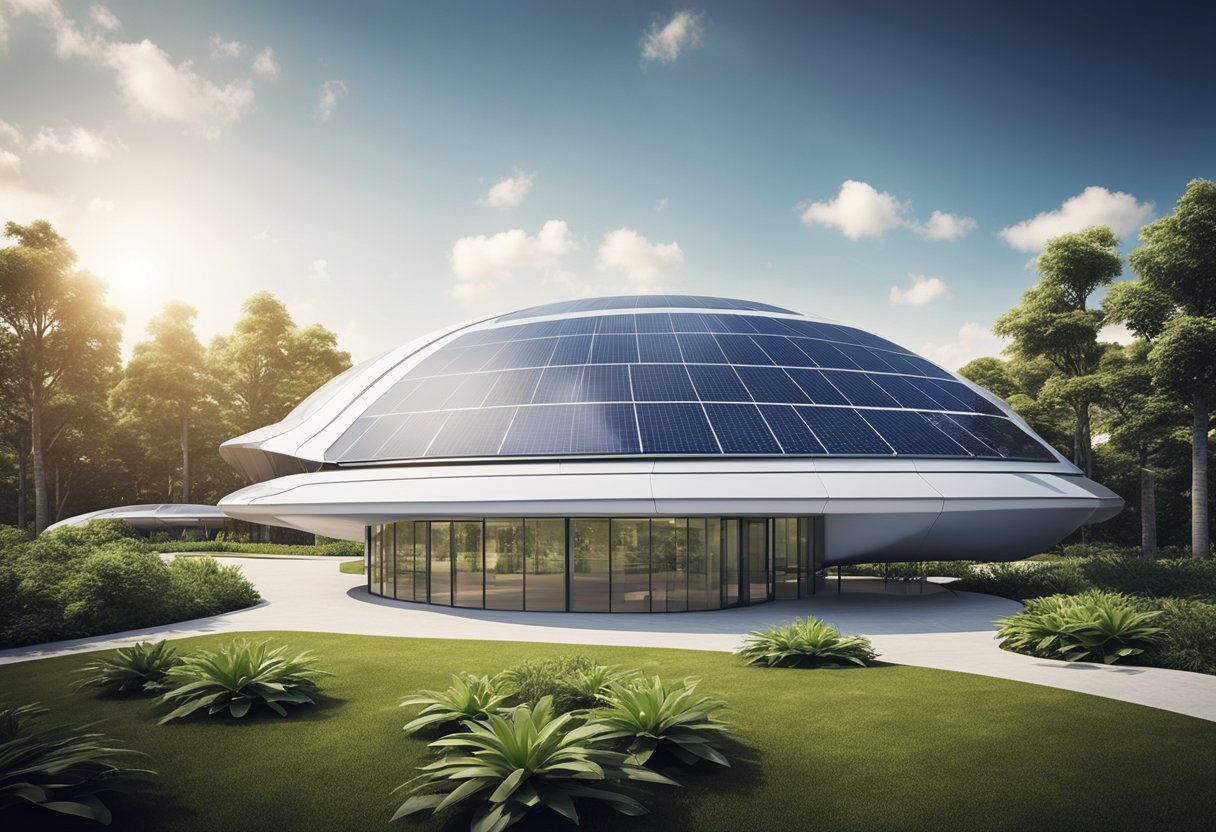
Space Tourism Training Facilities: Space tourism has rapidly transitioned from a science fiction dream to a tangible reality. As private companies push the frontiers of travel beyond our atmosphere, training facilities have become an essential part of preparing non-professional astronauts for the experiences and challenges of space travel. These facilities aim to equip space tourists with the knowledge and skills necessary to safely enjoy their journey among the stars.
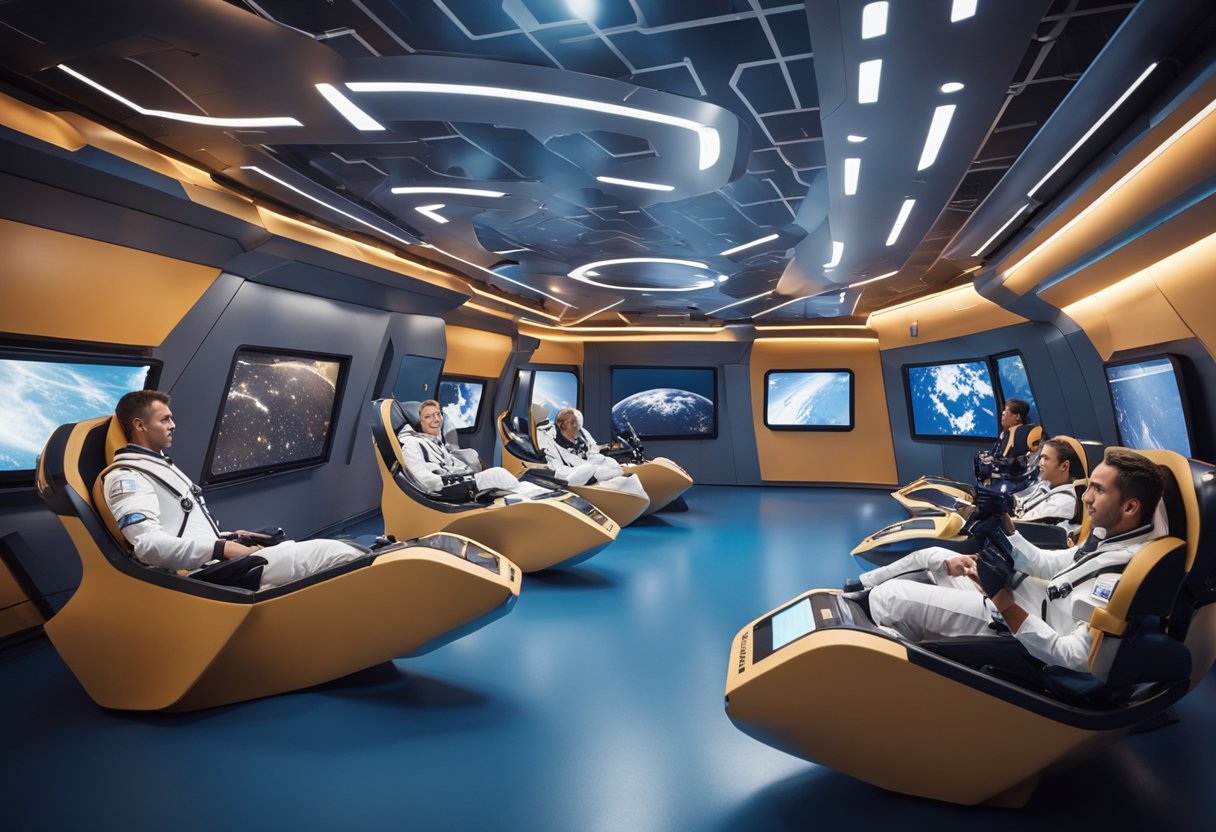
Around the world, a network of astronaut training facilities are emerging. From simulating zero-gravity environments to educating space travellers on spacecraft operations and safety, these centres represent the cutting edge of space tourism’s infrastructure. With the journey to space no longer confined to elite astronauts, the importance of adequately preparing paying participants has never been greater. Preparing for a voyage into the cosmos necessitates a comprehensive training regime that instils confidence and ensures the well-being of space tourists.
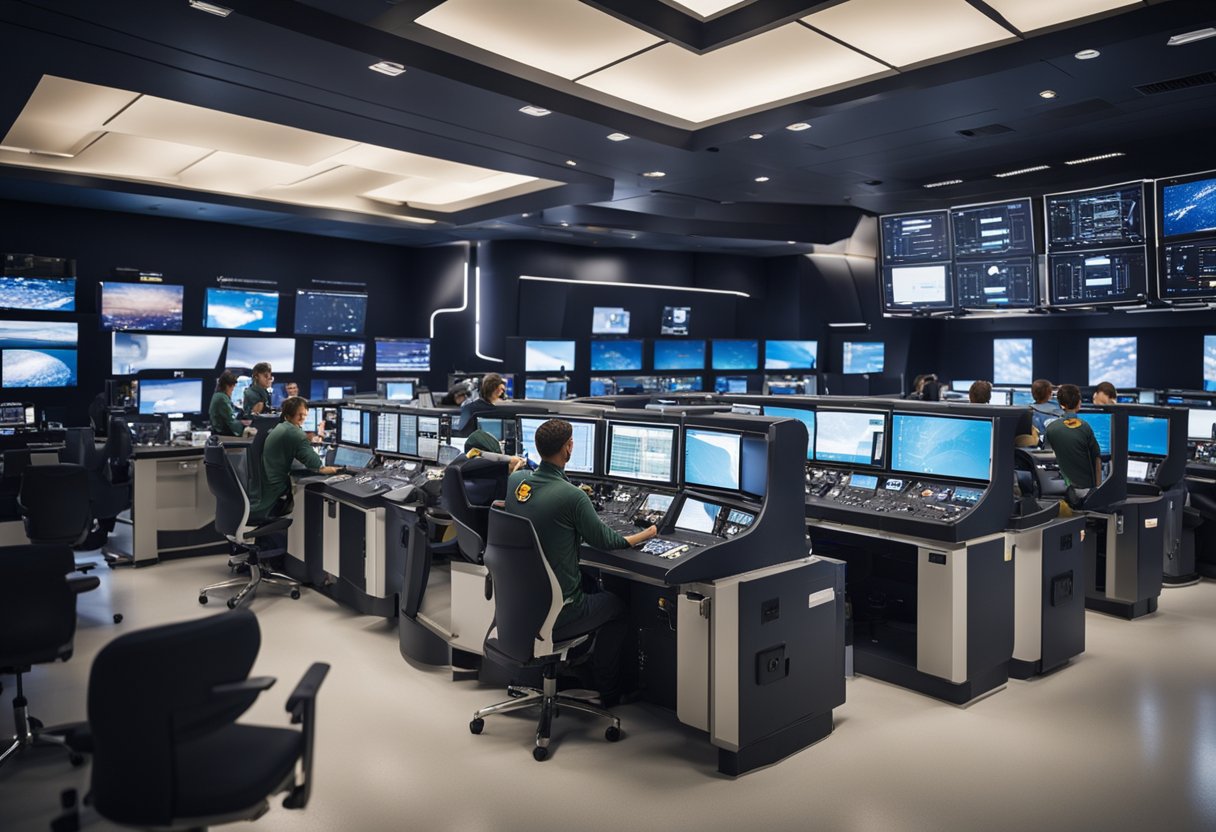
As we explore the burgeoning industry of space tourism, it’s clear the concept of civilians travelling to space has transformed from a science fiction dream into a tangible opportunity. This evolution is marked by significant milestones and an array of providers paving the way to the cosmos for paying tourists.
Space tourism has come a long way since Yuri Gagarin became the first human to journey into outer space in 1961. The first acknowledged space tourist was Dennis Tito, who, in 2001, embarked on an orbital flight to the International Space Station, heralding a new age for private space travel. The suborbital spaceflights pursued by companies like Virgin Galactic, founded by Richard Branson, aim to make brief space experiences more accessible, while orbital flights offer extended stays in space. These ventures illustrate a clear shift from government-led space exploration to a private sector driven by visionaries such as Branson and Jeff Bezos’ Blue Origin.
Today, we witness multiple entities, like SpaceX, Blue Origin, and Virgin Galactic, in a fierce competition to become the leading space tourism providers. Virgin Galactic has already sold tickets to prospective space tourists, dreaming about glancing at Earth from the edge of space. Blue Origin’s suborbital trips, aboard the New Shepard vehicle, offer a few minutes of weightlessness and a view of our planet’s curvature. Meanwhile, SpaceX is set to revolutionise space travel with planned orbital flights that extend beyond the Karman line – the boundary between the Earth’s atmosphere and outer space. An interesting development in this field is the advent of SpaceVoyageVentures.com, an early forerunner in documenting past, present, and near-future tourist trips into space.
As we step into the era of commercial space travel, rigorous training regimes have become a prelude to the extraordinary journey beyond Earth. Our preparatory programs are designed to meet the demands of spaceflight, ensuring that every potential astronaut can safely enjoy the wonders of the cosmos.
Before embarking on a space adventure, it is crucial for aspiring space tourists to understand the necessary qualifications and training protocols required to become a commercial astronaut. To reach the stars, one must undergo a comprehensive astronaut training curriculum that often includes a mix of classroom instruction and hands-on experiences. Each trainee must meet certain health and fitness criteria, and trainings are tailored to the specific voyage, be it suborbital flights that just breach the edge of space or orbit-level excursions to space stations.
G-force, or gravitational force, is one of the most intense physical challenges faced during launch and re-entry. Our programs utilise a centrifuge to simulate the experience of increased g-forces, systematically acclimating participants to the pressure they will endure. This machine is pivotal in preparing trainees for the realities of space travel, creating conditions akin to those experienced during a rocket launch, where forces can surge up to three times normal gravity.
The absence of gravity, or weightlessness, is a disorienting sensation unique to space environments. To help travellers adapt, we provide comprehensive training sessions aboard parabolic flights, which create short-lived periods of weightlessness. Moreover, certain facilities offer underwater training that simulates the zero-gravity experience, an essential technique in minimising the jarring transition from Earth’s gravity to the weightlessness of space. These exercises are vital in prepping our astronauts to move and operate effectively when off-planet.
We equip our candidates with the knowledge and skills to gracefully manoeuvre through their spaceflight, instilling confidence through practiced readiness. In addition, Space Voyage Ventures keeps a keen eye on future developments in the realm of space tourism, including cutting-edge training opportunities.
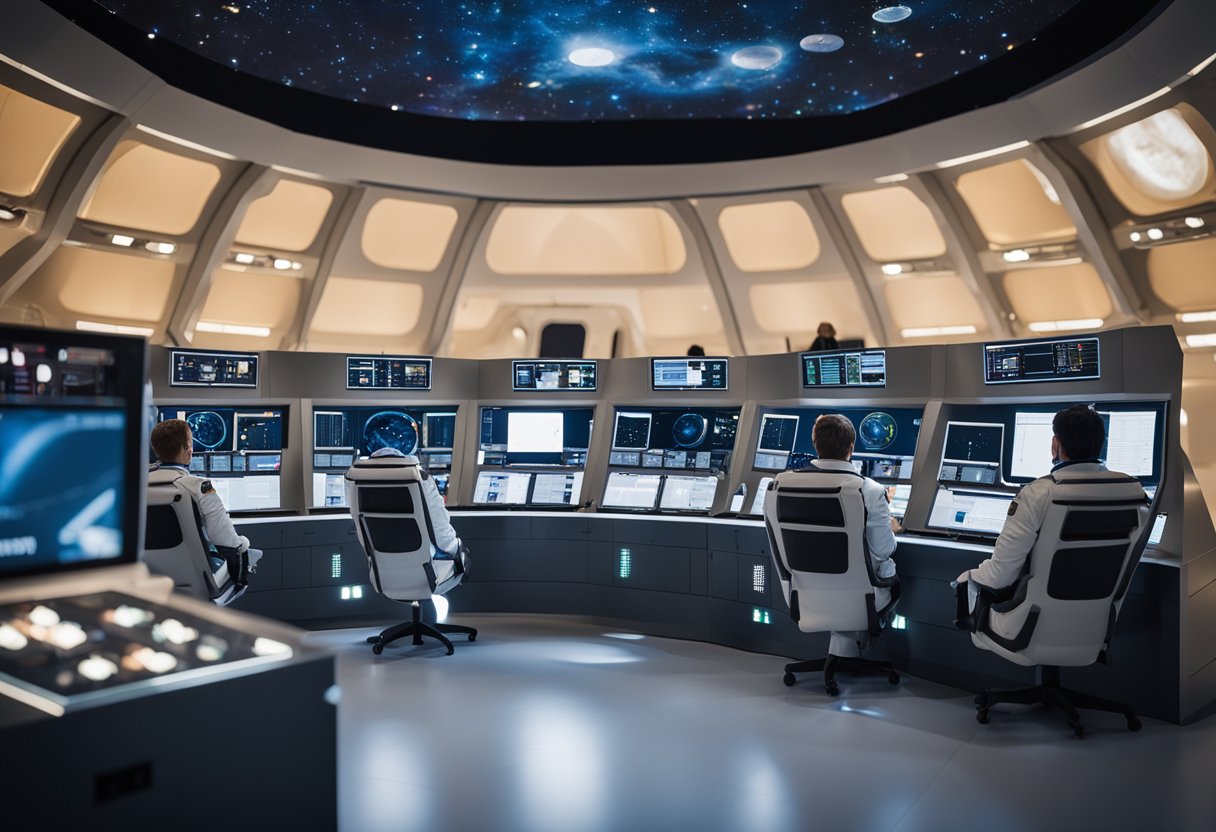
As we explore the burgeoning field of space tourism, a number of facilities around the globe are preparing civilians for the rigours of space travel. These training centres offer a variety of programmes, from simulated zero-gravity environments to mission-specific preparation, catering to the needs of future space tourists.
The United States is home to several prominent space tourism training facilities. NASA‘s own facilities have traditionally prepared astronauts for missions to the International Space Station, but now, with the rise of commercial spaceflight, these centres are beginning to cater to space tourists as well. The Kennedy Space Center, for instances, provides educational experiences for those interested in space.
A newcomer in the realm of space tourism training is Axiom Space, which offers a comprehensive astronaut training programme designed for private individuals seeking to visit the International Space Station. Their state-of-the-art facilities and partnership with NASA hint at the growing synergy between public and private sectors in space training.
Spaceport America in New Mexico represents a significant leap towards commercial space ventures. It serves as a hub for private spaceflight companies and an operational spaceport for suborbital tourist flights, emerging as a leading destination for aspiring space tourists.
Internationally, various countries are partaking in the space tourism rush. Roscosmos, the Russian space agency, has decades of experience in cosmonaut training and offers programmes for space tourists at the Yuri Gagarin Cosmonaut Training Center.
Across the Atlantic, prospects for a state-of-the-art training facility are shaping up with projects like Blue Abyss in the United Kingdom, which is set to feature the world’s largest deep pool designed for astronaut training and other marine-related research.
Many of these global training ventures are detailed on early-stage websites like SpaceVoyageVentures.com, which provides an extensive overview of existing and forthcoming space tourism trips. Such platforms are key in educating and inspiring a new wave of individuals eager to experience the final frontier.
In this section, we discuss the crucial technologies that have made the concept of space tourism a reality. Let’s focus on the sophisticated engineering that goes into the spacecraft used in space tourism and the advanced launch systems that propel these vehicles beyond Earth’s atmosphere.
The engineering of spacecraft is pivotal to the success of space tourism. Companies have engineered specialised vehicles, such as Virgin Galactic’s SpaceShipTwo and Blue Origin’s New Shepard, to carry tourists into space. SpaceShipTwo, for example, is a suborbital air-launched vehicle designed for space tourism. It has the capability to carry multiple passengers, who can experience a few minutes of weightlessness and see the curvature of the Earth. The engineering behind these spacecraft heavily focuses on safety, comfort, and the unique requirements of a commercial space travel experience.
We’re also witnessing innovations in spacecraft design from SpaceX with their Falcon 9 Rocket and the next-generation Starship. The Falcon 9 has become synonymous with reliability in the space industry, and the Starship is poised to be a fully reusable spacecraft that could significantly reduce the cost of space travel, making it more accessible.
Our understanding of launch systems has significantly improved with the evolution of space tourism. Reusable rocket technology has been a game-changer, led by the SpaceX Falcon 9 Rocket, which is capable of returning to Earth and landing vertically after separating from its payload. This not only reduces waste but dramatically cuts down on the costs associated with traditional single-use rockets.
Beyond conventional rockets, there’s a movement towards innovative launch strategies. For example, SpaceShipTwo is released from a carrier aircraft before igniting its rocket engines for the ascent into space, which is more fuel-efficient and causes less wear on the spacecraft systems during liftoff. These advancements in launch systems are integral to making space tourism a regular venture.
For those keen on learning more about space tourism opportunities and the underlying technologies, a resource such as SpaceVoyageVentures.com offers a window into ongoing developments within the industry, including upcoming missions and technological milestones.
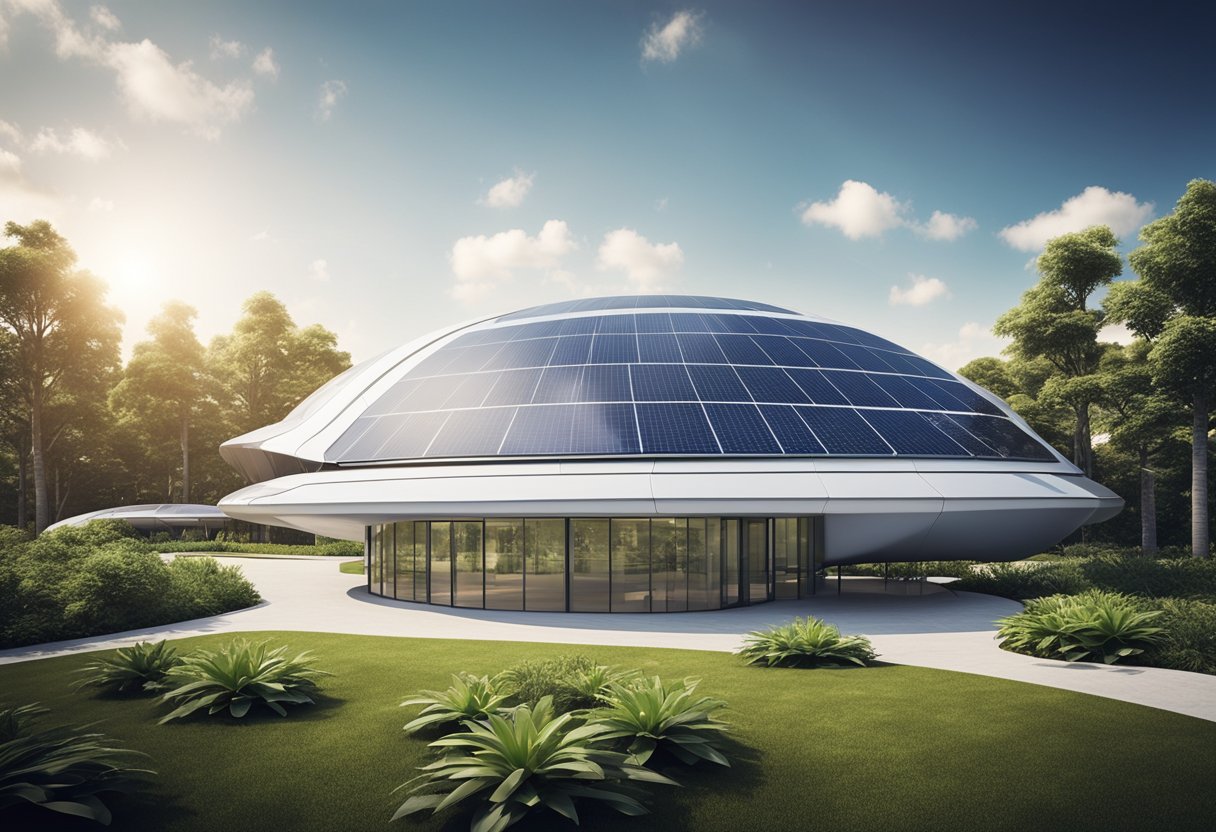
In our exploration of space tourism training facilities, it is essential to understand their economic repercussions and the sustainability challenges they introduce. We delve into the market forces propelling this industry forward and unpack the environmental factors that must be accounted for.
The advent of space tourism has been made possible by the investments and ambitions of billionaires, who envision commercial travel beyond Earth as a lucrative market. According to Market Insights, space tourism could burgeon into an industry worth over $800 billion by 2030. Our analysis at SpaceVoyageVentures.com corroborates this projection, highlighting a surge in demand for both suborbital and orbital experiences. Training facilities are the backbone of this economy, preparing travellers for the rigours of spaceflight, which has necessitated significant capital and infrastructural developments.
Economic Contributions:
Demand and Supply:
Sustainability in space tourism extends beyond the confines of our atmosphere; it encapsulates the mitigation of adverse effects on Earth’s ecosystems. We are mindful that the ascent of rockets releases greenhouse gases and black carbon into the stratosphere, which can potentially affect global climate patterns. At SpaceVoyageVentures.com, we document initiatives aiming to develop sustainable space tourism practices to address these issues.
Atmospheric Impact:
Mitigation Strategies:
By emphasising economic viability alongside environmental stewardship, we ensure a balanced approach that underscores the essence of sustainable development within the space tourism sector.
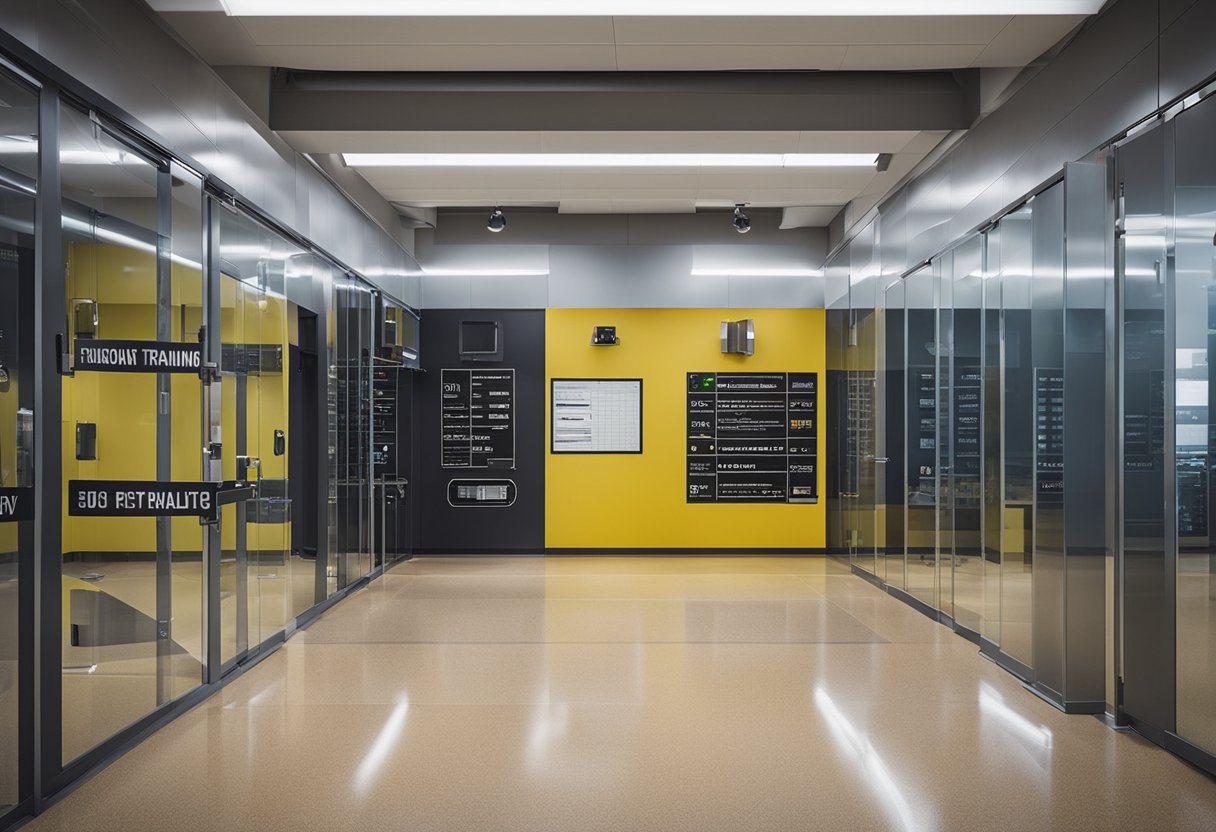
In this section, we’ll explore how safety protocols and regulations play a crucial role in the preparation of individuals for space tourism. It’s essential for space tourists to receive proper orientation and to comprehend the regulatory landscape that governs commercial space travel.
The astronaut orientation process is critical for ensuring that private astronauts are well-prepared for the rigours of space travel. Orbite Astronaut Orientation programmes provide comprehensive training, which includes simulated zero-gravity sessions and emergency response exercises. The training is designed to familiarise participants with the conditions they will encounter in space and equip them with the knowledge to handle potential challenges. For instance, the Inspiration4 mission demonstrated a successful model where civilian astronauts underwent extensive preparatory courses to ensure their readiness for space.
The Federal Aviation Administration (FAA) serves a regulatory function in the space tourism industry, overseeing the safety of commercial astronaut operations. They enforce stringent safety requirements concerning spacecraft design, crew training, and emergency procedures. Regulations set by the FAA mandate that all companies must adhere to these standards to legally conduct spaceflights. Our understanding of these guidelines informs the structure of training facilities and programmes. These systems are continually evolving as the FAA adapts to the growth of the industry and new advancements in space-flight technology.
It’s pertinent for us to stay well-informed about these regulations to maintain the safety and integrity of commercial space exploration. By continuously liaising with regulatory bodies and integrating the newest safety measures, we can assure that space tourism training facilities meet and exceed current standards.
As we envision the future of space tourism, it is imperative to invest in educational programmes that prepare the next generation for the complexities of space travel. We recognise that the path to becoming an astronaut or a space tourist is as much about education as it is about the excitement of venturing beyond our planet.
Virgin Galactic has laid plans for a new astronaut training facility to support the burgeoning space tourism industry. This facility is designed to provide a comprehensive preparation experience encompassing both the physical and cognitive demands of space travel. Not only will participants receive practical training; they’ll also gain an educational foundation that reinforces the principles of STEM — crucial for understanding the mechanics of spaceflight.
Space Adventures has also been instrumental in educating and training space tourists. Their history shows a commitment to providing individuals with the experience necessary for orbital flights, albeit with a focus on those with a deeper interest in pioneering the space tourism sector.
To cultivate a robust relationship between youth and the cosmos, diverse STEM outreach programmes have been developed. These include initiatives like space camps and specialised educational challenges aimed at inspiring and equipping students with the skills and knowledge in science, technology, engineering, and mathematics.
Furthermore, a global space prize challenge, aimed at young women aged 15-18, offers finalists mentorship and experiences such as Zero G flights. This underscores our dedication to inclusive education and the importance of empowering future leaders in the space tourism sector.
By fostering these educational and outreach programmes, we bridge the gap between youthful curiosity and future space endeavours, ensuring that the next wave of space tourists and professionals is ready for the extraordinary journey ahead.
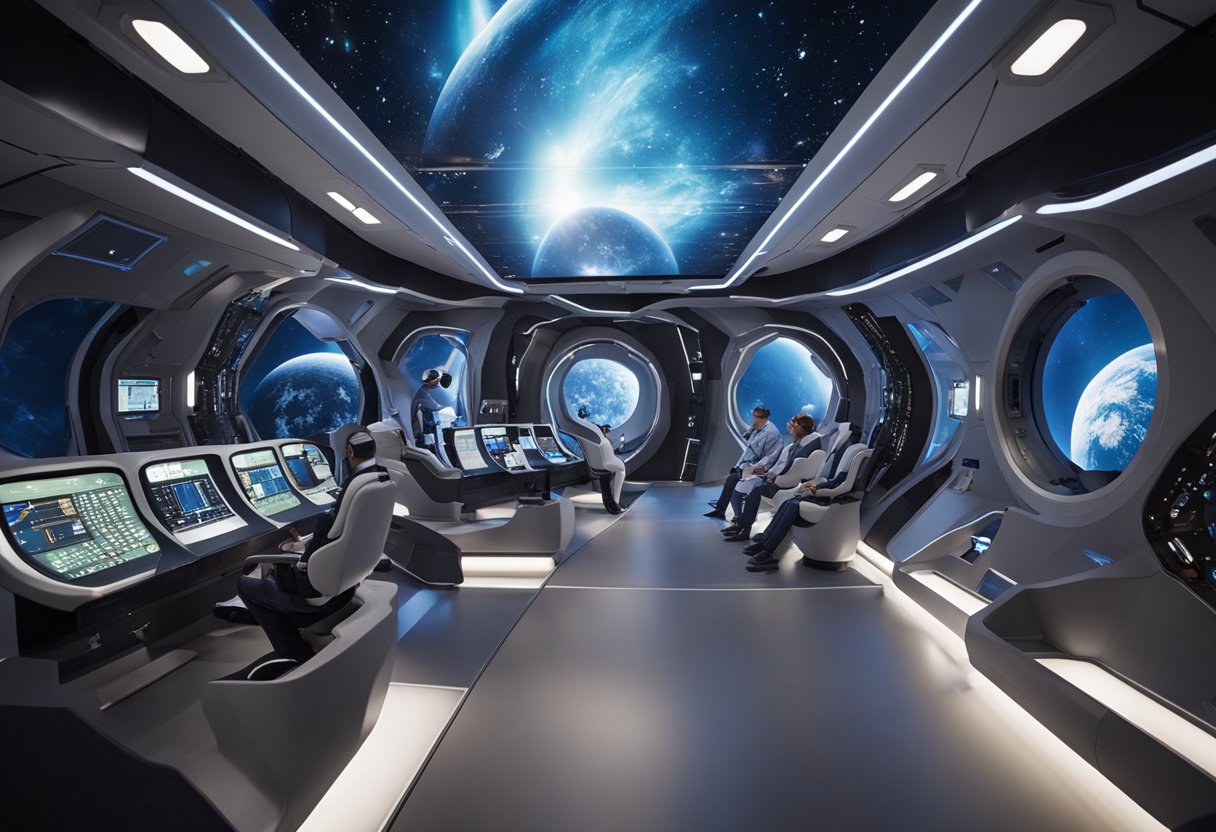
As pioneers in the burgeoning industry of space tourism, we understand the exhilarating journey that awaits private citizens who venture beyond Earth’s atmosphere. Our focus encompasses both the rigorous pre-flight preparations and the unparalleled in-flight experience.
At the core of space tourism, the comprehensive pre-flight training serves as an essential primer for travellers. Space tourists undergo a series of preparatory courses, designed to acquaint them with the sensations of weightlessness and the mechanics of travel beyond our planet. Facilities like Virgin Galactic’s state-of-the-art training centre provide in-depth simulations and fitness regimens to ensure guests are physically and mentally equipped for suborbital space voyages.
The pinnacle of space tourism is the in-flight experience itself. It is a transformative event, where passengers break the bonds of gravity and ascend towards the stars. Virgin Galactic’s passengers will briefly sample the exhilarating taste of weightlessness in suborbital space, while beholding the curvature of Earth—surpassing the views from atop Mount Everest.
In this section, we explore significant individuals and their contributions to the burgeoning field of space tourism, from the first private citizens to soar into orbit to today’s billionaire innovators.
The narrative of space tourism was forever changed in 2001 when Dennis Tito, an American engineer and multimillionaire, became the first private citizen to fund his own trip into space. His historic flight aboard a Russian Soyuz spacecraft signalled the potential for private individuals—beyond professional astronauts—to experience orbit. This momentous event paved the way for others, and since then, a select few have followed in Tito’s footsteps, investing millions for the opportunity to view Earth from the cosmos.
The advent of space tourism has been significantly shaped by the visions and investments of billionaire entrepreneurs such as Richard Branson and Jeff Bezos. Branson, the maverick behind the Virgin Group, realised his dream with Virgin Galactic, which aims to provide suborbital flights to the edge of space. Not only did he found the company, but in 2021, he also became one of the first participants to fly aboard his own space tourism vehicle, the VSS Unity.
In parallel, Bezos, the founder of Amazon, launched Blue Origin, developing the New Shepard spacecraft designed for commercial spaceflight. Bezos himself participated in a suborbital flight in July 2021, marking a significant milestone for Blue Origin and private space travel. These billionaire pioneers have not only etched their names into space tourism history but also opened the gates for other private citizens to venture into space, transforming science fiction into reality.
Our discussions point towards a future where space travel may become a more routine endeavour. For keen insights into the ongoing developments and to track the emergence of new opportunities, SpaceVoyageVentures.com serves as an informative resource on the evolving landscape of space tourism.

As we venture into the era of space tourism, observing the cosmos has never been more accessible to the general public. From witnessing spectacular skywatching events to engaging in astronomy-related experiences, the opportunity to explore the final frontier is at our fingertips.
Rocket Launches: We’ve all seen footage of rocket launches, the sheer power and energy as they break free from Earth’s grasp. These events are not just pivotal moments for astronauts but sensational opportunities for us, the spectators, to witness. Arranging viewings for rocket launches has become a staple activity at space tourism training facilities, allowing guests to observe as spacecrafts ascend to orbit or to rendezvous with the International Space Station.
Astronomy plays a significant role in enriching the space tourism experience. Through our partnership with SpaceVoyageVentures.com, we offer astrotourism packages that not only focus on training but also on educating space tourists about celestial mechanics and the wonders of the universe.
It is our mission to offer an experience that intertwines the thrill of space tourism with the profound beauty of astronomy, making it a comprehensive adventure for all who join us.
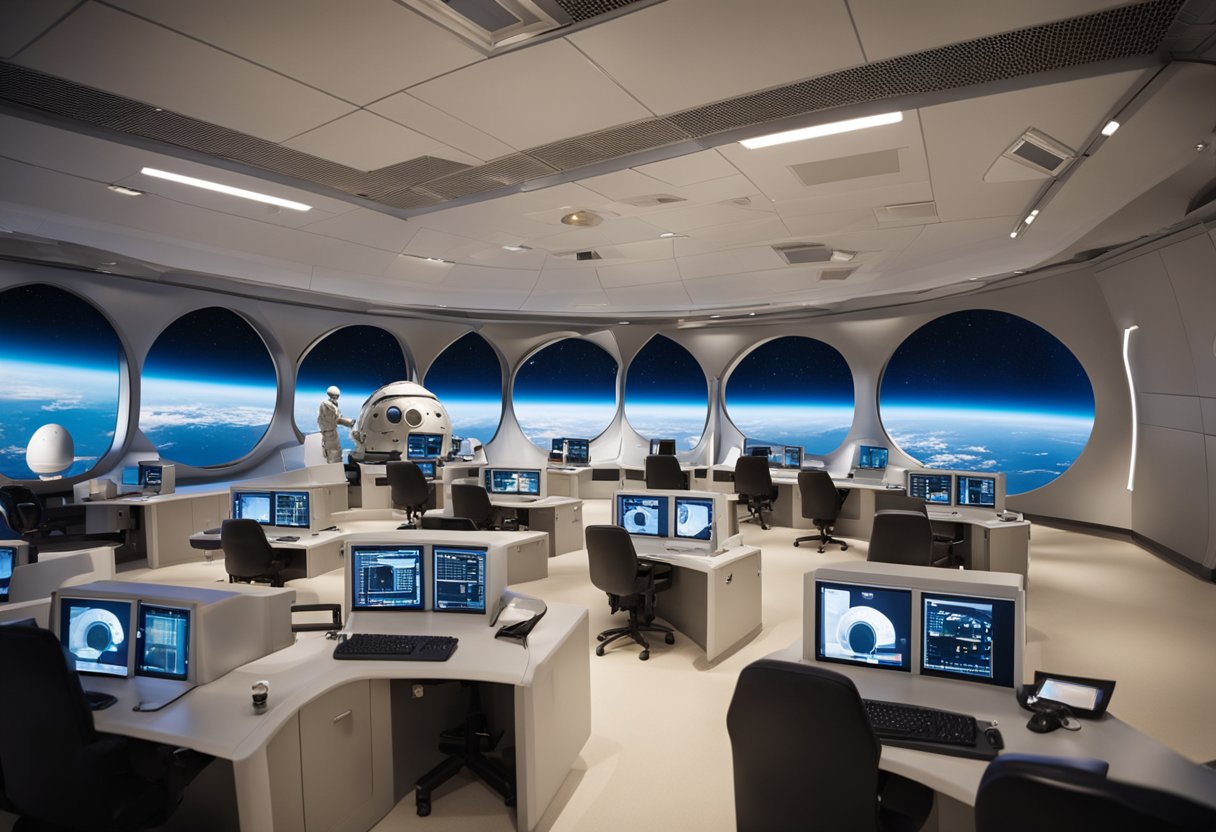
We’ve compiled a list of frequently asked questions to provide insight into the unique and thrilling world of space tourism training.
Participants at astronaut training centres undergo rigorous physical and psychological preparation, which can include piloting fighter jets, experiencing zero gravity, and undertaking high-G training in a centrifuge. For an insight into the intensity of such training, find information on the training of a space tourist.
Enrolling in a space flight training programme typically requires a detailed application process, comprising medical examinations and assessments of physical fitness. Programmes entail a range of activities from scuba diving to simulate the weightlessness of space, to classroom work focusing on space mechanics. More specifics can be found at Space Academy.
Yes, members of the public can tour certain NASA astronaut training facilities. These tours offer an exclusive look at different aspects of astronaut training and provide an educational overview of spaceflight operations.
NASA offers a variety of educational programmes for students, such as Space Camp, where attendees engage in simulated missions, tackle engineering challenges, and learn about space science, fostering a solid foundation for those interested in space exploration.
Yes, training for space tourism is designed to be accessible to those without a professional astronaut background. A testament to this is Blue Origin’s New Shepard programme, which aims to take passengers to space with minimal training required.
The astronaut training experience at Kennedy Space Center includes simulated space missions, a microgravity simulation pool, and practice in a full-scale space shuttle mock-up, offering participants an authentic astronaut experience.